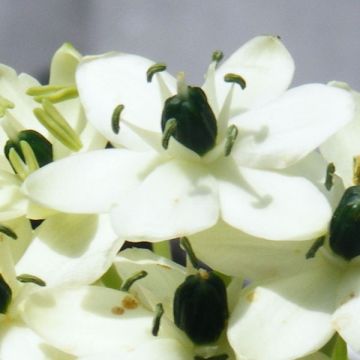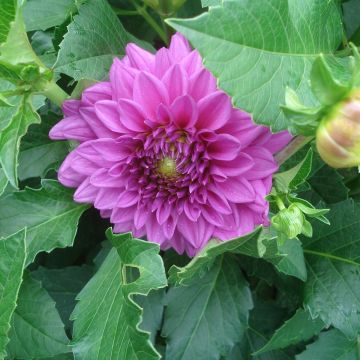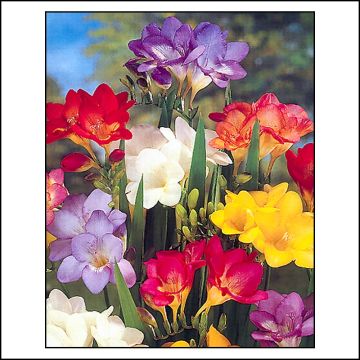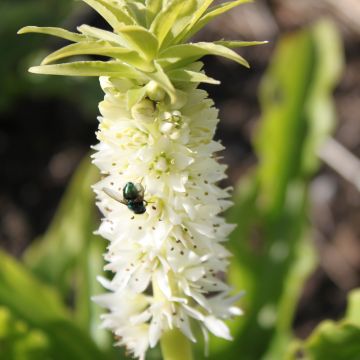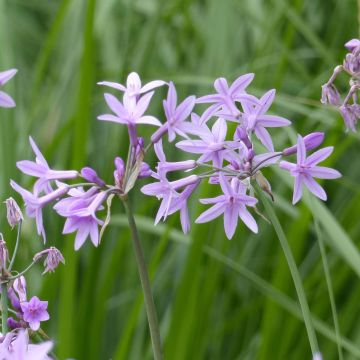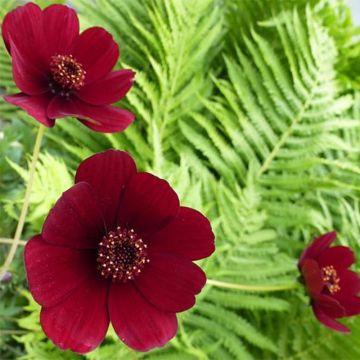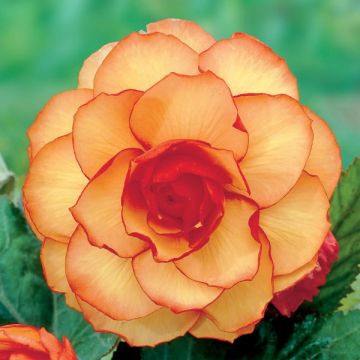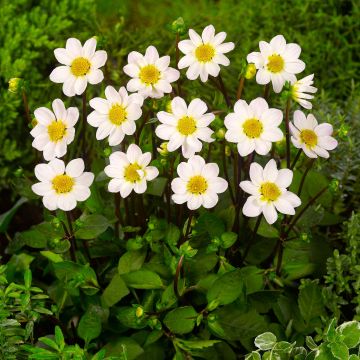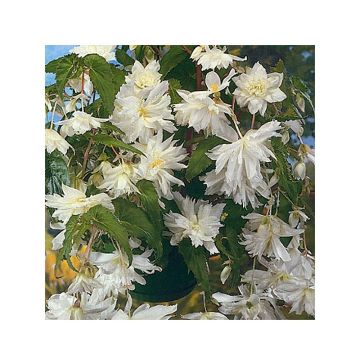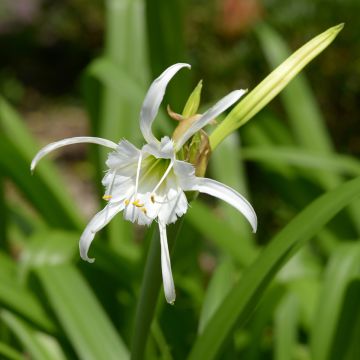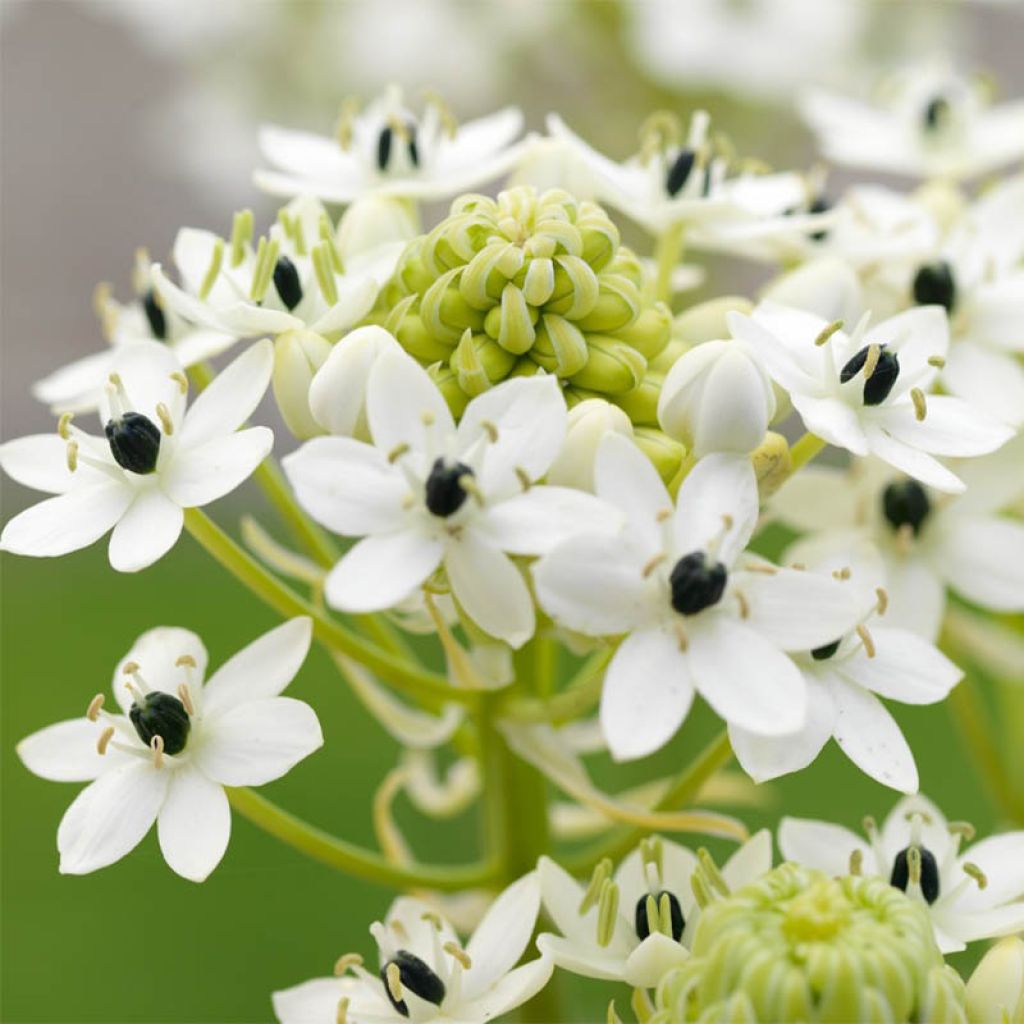

Ornithogalum saundersiae
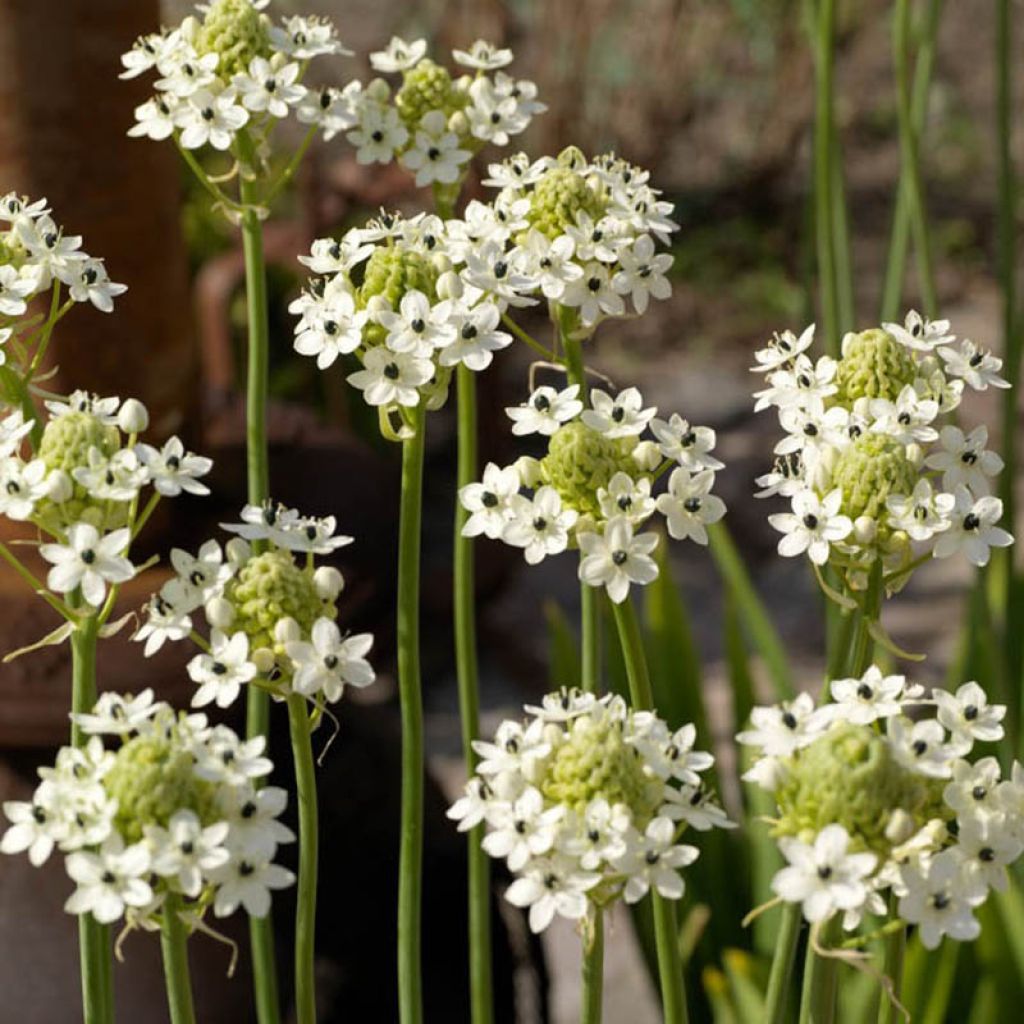

Ornithogalum saundersiae
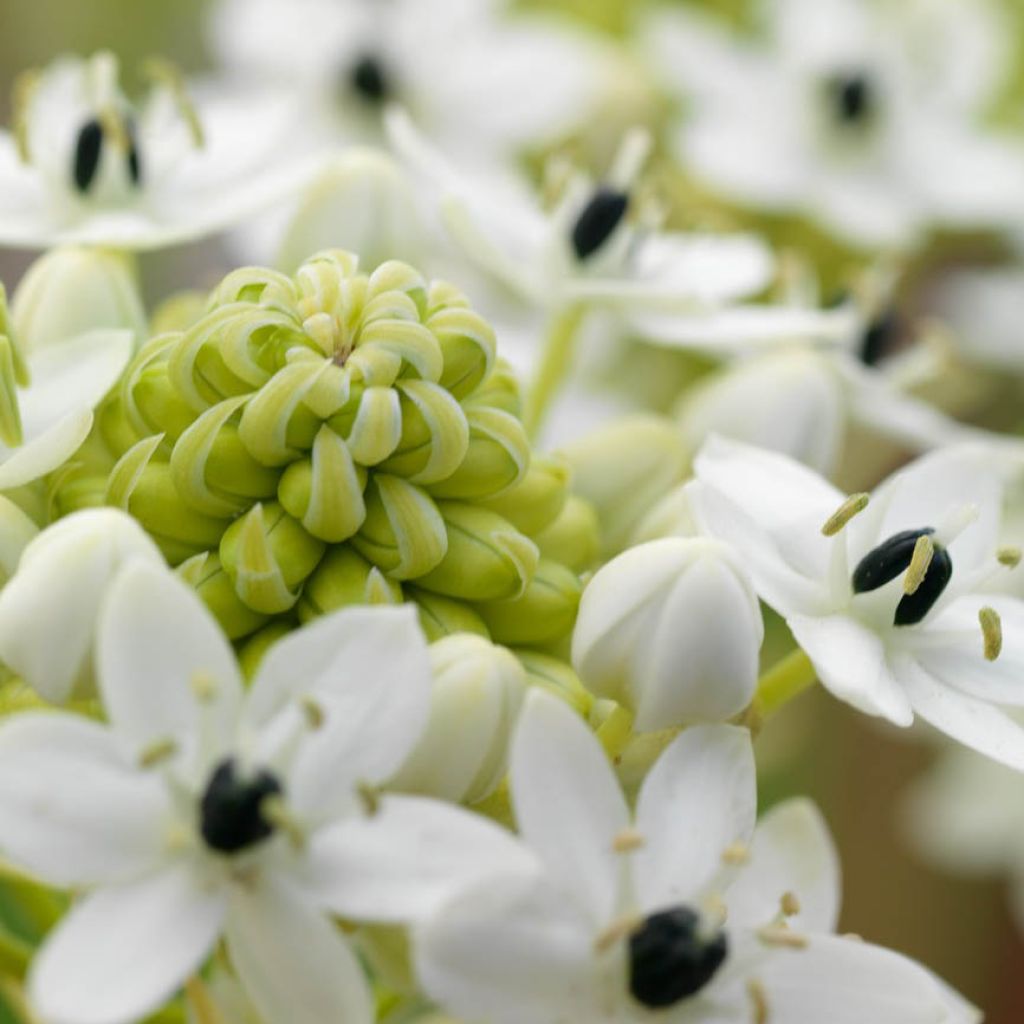

Ornithogalum saundersiae
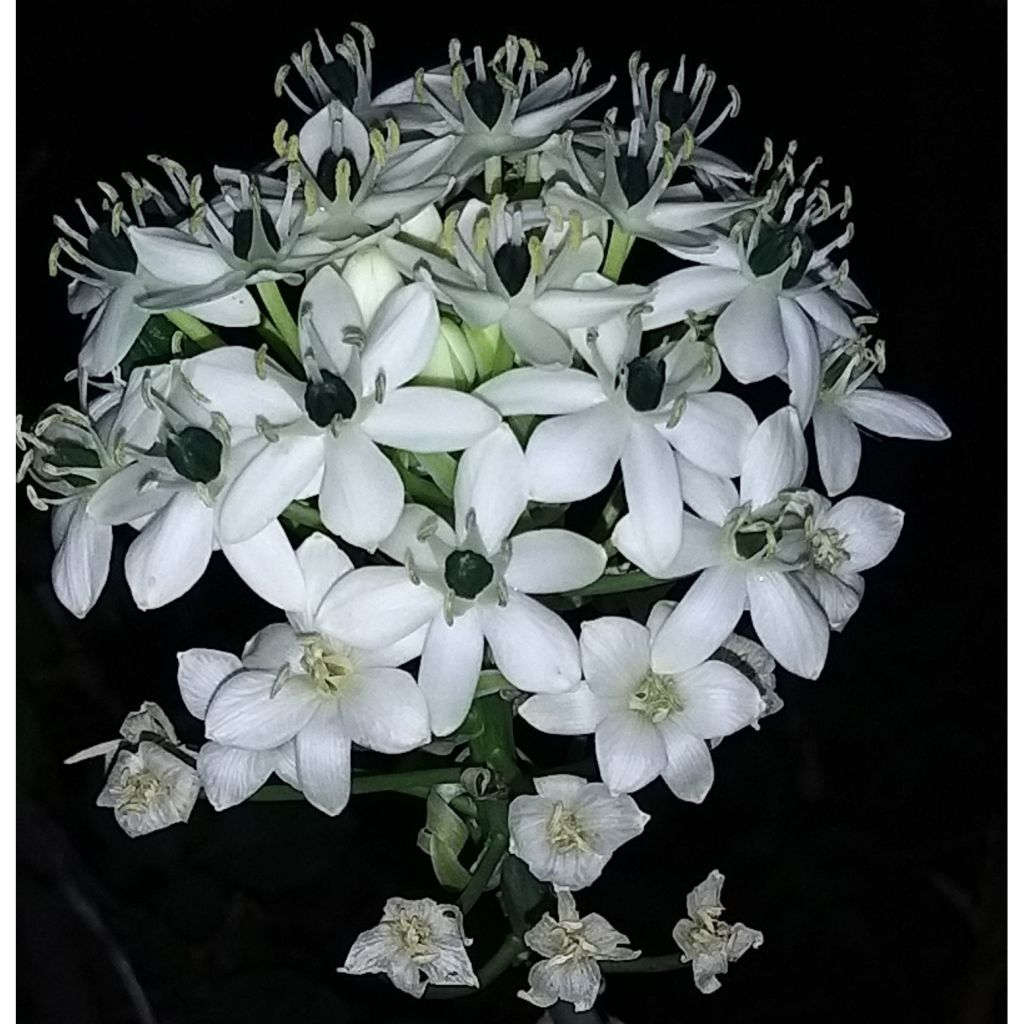

Ornithogalum saundersiae
Ornithogalum saundersiae
Ornithogalum saundersiae
Saunders' Star-of-Bethlehem, Giant Chincherinchee
This item cannot be shipped to the selected country
Delivery charge from €5.90
More information
Schedule delivery date,
and select date in basket
This plant carries a 6 months recovery warranty
More information
We guarantee the quality of our plants for a full growing cycle, and will replace at our expense any plant that fails to recover under normal climatic and planting conditions.
From €5.90 for pickup delivery and €6.90 for home delivery
Express home delivery from €8.90.

Does this plant fit my garden?
Set up your Plantfit profile →
Description
The Ornithogalum saundersiae is a variety of Ornithogalum, also known as the Bethlehem Star. It shows beautiful originality by bearing on its upright stems beautiful corymbs of star-shaped flowers hovering over green foliage that tends towards grey. At the heart of each flower, the ovary forms a dark olive green, an almost black sphere that resembles an eye or a precious pearl. This is the tallest and most upright variety of Ornithogalum we offer, and it creates a particularly striking visual effect, mainly if you cultivate it in an elegant pot with simple design lines. The flowers in bouquets last a very long time.
Belonging to the Liliaceae family, the Ornithogalum saundersiae comes from southern Africa. Its unique habit is perfectly erect; the floral stem shoots straight up from the basal leaves and carries the inflorescences at a height of 80 cm (32in). The foliage is quite characteristic, ensate (sword-shaped), upright and reaching, on average, halfway up the flowering stems. The corymbs group together numerous small white star-shaped cups with a black or dark green ovary in their centre. This raised element in the hollow of the flower brings a touch of contrast and adds even more personality to this beautiful bulbous plant. The flowers open from the periphery to the centre from April to June and emit a delicate fragrance. The Ornithogalum is very suitable for fresh flower bouquets; it can be kept in a vase for a whole month while the small cups bloom one by one. Consider filling a single-flower vase with it; it lends itself wonderfully to that.
In the garden, the Ornithogalum saundersiae must be planted in full sun in light and well-drained soil. The soil can be slightly acidic to slightly alkaline. It also requires regular watering. Plant the bulbs 10 cm (4in) deep once the last frost has passed. This variety is frost-sensitive and cannot tolerate temperatures below -3°C (26.6°F). In autumn, the bulbs will need to be stored.
This Bethlehem Star is not the same as the one used in Bach flower remedies. Attention: this variety is toxic if ingested in large quantities.
Report an error about the product description
Ornithogalum saundersiae in pictures
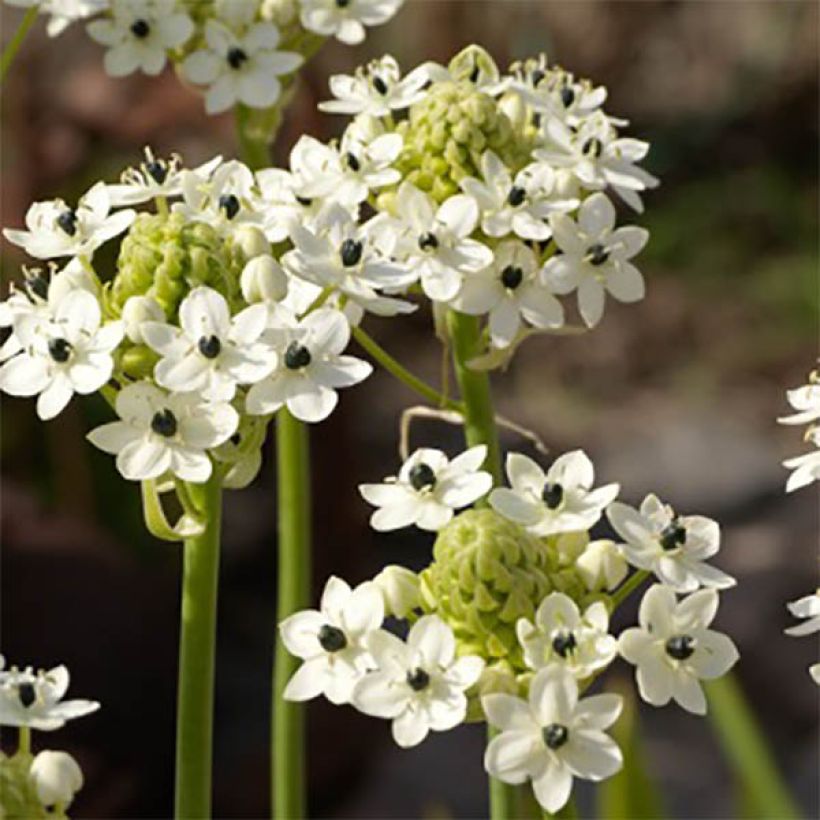

Plant habit
Flowering
Foliage
Botanical data
Ornithogalum
saundersiae
Liliaceae
Saunders' Star-of-Bethlehem, Giant Chincherinchee
South Africa
Other Summer Garden Star-of-Bethlehem
Planting and care
Plant your Ornithogalum saundersiae bulbs after the last frost in a sunny location, 10 cm (4in) deep and spaced 10 cm (4in) apart. The soil should be deeply worked and enriched with compost. Ornithogalums are sensitive to frost. In a milder climate with very little frost, you can leave the bulbs in the ground and mulch them. In colder regions, the bulbs should be dug up in autumn before the first frost and stored in a cool, dry place. You can also grow them in pots (1 bulb per 15cm (6in) pot, with the top of the bulb just above the soil level) in a good quality compost that you regularly fertilise, and then move them outside at the end of spring and protect them from frost in winter.
Planting period
Intended location
Care
-
, onOrder confirmed
Reply from on Promesse de fleurs
Bulbs to grow in pots
Haven't found what you were looking for?
Hardiness is the lowest winter temperature a plant can endure without suffering serious damage or even dying. However, hardiness is affected by location (a sheltered area, such as a patio), protection (winter cover) and soil type (hardiness is improved by well-drained soil).

Photo Sharing Terms & Conditions
In order to encourage gardeners to interact and share their experiences, Promesse de fleurs offers various media enabling content to be uploaded onto its Site - in particular via the ‘Photo sharing’ module.
The User agrees to refrain from:
- Posting any content that is illegal, prejudicial, insulting, racist, inciteful to hatred, revisionist, contrary to public decency, that infringes on privacy or on the privacy rights of third parties, in particular the publicity rights of persons and goods, intellectual property rights, or the right to privacy.
- Submitting content on behalf of a third party;
- Impersonate the identity of a third party and/or publish any personal information about a third party;
In general, the User undertakes to refrain from any unethical behaviour.
All Content (in particular text, comments, files, images, photos, videos, creative works, etc.), which may be subject to property or intellectual property rights, image or other private rights, shall remain the property of the User, subject to the limited rights granted by the terms of the licence granted by Promesse de fleurs as stated below. Users are at liberty to publish or not to publish such Content on the Site, notably via the ‘Photo Sharing’ facility, and accept that this Content shall be made public and freely accessible, notably on the Internet.
Users further acknowledge, undertake to have ,and guarantee that they hold all necessary rights and permissions to publish such material on the Site, in particular with regard to the legislation in force pertaining to any privacy, property, intellectual property, image, or contractual rights, or rights of any other nature. By publishing such Content on the Site, Users acknowledge accepting full liability as publishers of the Content within the meaning of the law, and grant Promesse de fleurs, free of charge, an inclusive, worldwide licence for the said Content for the entire duration of its publication, including all reproduction, representation, up/downloading, displaying, performing, transmission, and storage rights.
Users also grant permission for their name to be linked to the Content and accept that this link may not always be made available.
By engaging in posting material, Users consent to their Content becoming automatically accessible on the Internet, in particular on other sites and/or blogs and/or web pages of the Promesse de fleurs site, including in particular social pages and the Promesse de fleurs catalogue.
Users may secure the removal of entrusted content free of charge by issuing a simple request via our contact form.
The flowering period indicated on our website applies to countries and regions located in USDA zone 8 (France, the United Kingdom, Ireland, the Netherlands, etc.)
It will vary according to where you live:
- In zones 9 to 10 (Italy, Spain, Greece, etc.), flowering will occur about 2 to 4 weeks earlier.
- In zones 6 to 7 (Germany, Poland, Slovenia, and lower mountainous regions), flowering will be delayed by 2 to 3 weeks.
- In zone 5 (Central Europe, Scandinavia), blooming will be delayed by 3 to 5 weeks.
In temperate climates, pruning of spring-flowering shrubs (forsythia, spireas, etc.) should be done just after flowering.
Pruning of summer-flowering shrubs (Indian Lilac, Perovskia, etc.) can be done in winter or spring.
In cold regions as well as with frost-sensitive plants, avoid pruning too early when severe frosts may still occur.
The planting period indicated on our website applies to countries and regions located in USDA zone 8 (France, United Kingdom, Ireland, Netherlands).
It will vary according to where you live:
- In Mediterranean zones (Marseille, Madrid, Milan, etc.), autumn and winter are the best planting periods.
- In continental zones (Strasbourg, Munich, Vienna, etc.), delay planting by 2 to 3 weeks in spring and bring it forward by 2 to 4 weeks in autumn.
- In mountainous regions (the Alps, Pyrenees, Carpathians, etc.), it is best to plant in late spring (May-June) or late summer (August-September).
The harvesting period indicated on our website applies to countries and regions in USDA zone 8 (France, England, Ireland, the Netherlands).
In colder areas (Scandinavia, Poland, Austria...) fruit and vegetable harvests are likely to be delayed by 3-4 weeks.
In warmer areas (Italy, Spain, Greece, etc.), harvesting will probably take place earlier, depending on weather conditions.
The sowing periods indicated on our website apply to countries and regions within USDA Zone 8 (France, UK, Ireland, Netherlands).
In colder areas (Scandinavia, Poland, Austria...), delay any outdoor sowing by 3-4 weeks, or sow under glass.
In warmer climes (Italy, Spain, Greece, etc.), bring outdoor sowing forward by a few weeks.

































